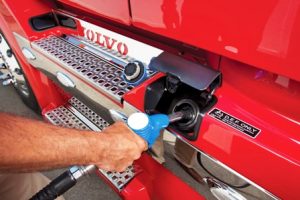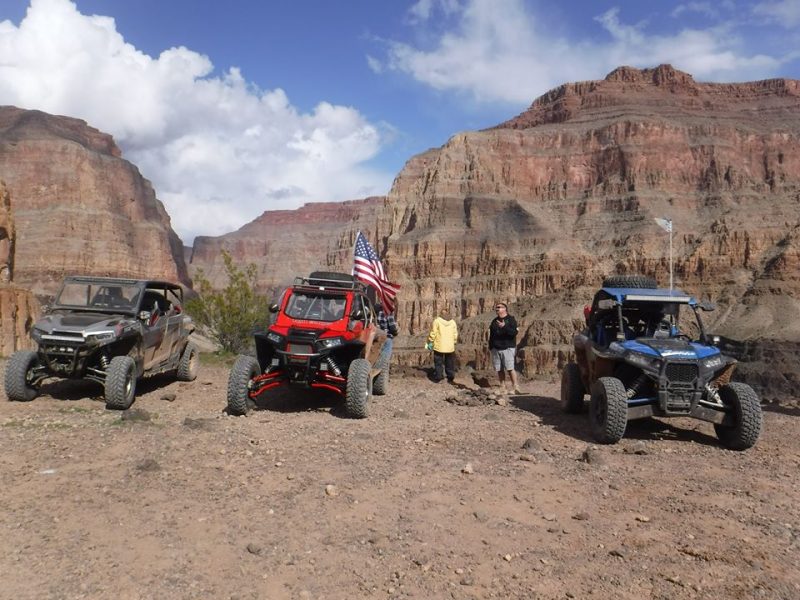My Dad just got a 2011 F250 4×4 crew cab diesel truck and I saw this other type gas filler next to the fuel tank opening and had no idea what it was. Well I ask him about and he said it is something for emissions that you have to fill every once in while. Well I read this story on RV Daily Report and have a little more understanding now.
THE TRUTH ABOUT DIESEL EXHAUST FLUID (DEF)
Sep 1
Written by: Freightliner Custom Chassis Corporation
9/1/2010 9:14 AM
By Tony Sippel, RV product manager at Freightliner Custom Chassis Corporation
As vehicles meeting 2010 EPA emissions requirements are hitting the market, Freightliner Custom Chassis Corporation (FCCC) has begun to receive feedback from our motorhome dealerships and potential customers. We’ve noticed that people are often confused about what exactly diesel exhaust fluid (DEF) is, how it works and how it fits into the Selective Catalytic Reduction (SCR) technology.
DEF is a solution stored in a tank, which is injected into the exhaust stream, reacting with the Nitrous Oxide (NOx) in the SCR catalyst, forming harmless nitrogen and water. Let’s take a moment, though to further dispel the myths and fully answer questions regarding DEF.
MYTH: SCR technology does not meet EPA 2010 emissions regulations.
FACT: The EPA has approved SCR technology for 2010 emissions regulations. SCR technology is a long-term solution, working to reduce fuel consumption directly tied to carbon-dioxide emissions and significantly decreasing the amount of noxious gasses in the exhaust.
MYTH: DEF is corrosive, hazardous and unsafe to handle.
FACT: DEF is two-thirds water. It is an organic, nontoxic compound made of 32.5 percent urea and 67.5 percent de-ionized water. DEF is carefully regulated by the American Petroleum Institute. Also, urea solution is not flammable and is not deemed “hazardous” by any United States or Canadian transportation authority.
MYTH: Urea becomes toxic at 118 degrees Fahrenheit.
FACT: According to James Spooner, vice president and general manager at Colonial Chemical Company, urea does not become toxic at any temperature. At 122 degrees Fahrenheit, DEF will still meet ISO specifications of less than 0.2 percent ammonia for at least 35 days. At that rate, it would take more than two years to reach the ammonia level of household ammonia, which obviously is not classified as toxic.
MYTH: DEF solution is a significant added expense for vehicle owners.
FACT: The industry is expecting the cost of DEF solution to be parallel with the price of fuel, fluctuating between $2.50 and $3.50 per gallon. Just 2.5 gallons of DEF will yield more than 800 miles of travel. FCCC uses 10 and 13 gallon tanks. Drivers should expect to refill their DEF tank three times a year. Also, through extensive testing, Cummins Engine realized a 5 percent to 9 percent fuel economy advantage with SCR over the alternative in-cylinder EGR solution, which amounts to significant savings over time.
MYTH: Refilling the DEF tank is a hassle for vehicle owners.
FACT: The DEF tank is as easily accessible to drivers as the gasoline tank. Think of it this way: Refilling your DEF tank is like refilling your windshield wiper fluid. It’s something that is completed a few times a year, taking no more than five or 10 minutes.
With so many myths out there, it’s easy to see why motorhome dealers and drivers have questions about DEF and SCR  technology. We hope this has helped clear up any confusion on the topic you may have experienced. If you do have questions or would like more information about DEF and SCR technology, please visit www.factsaboutscr.com or post your questions here, and I’ll be sure to follow up with you.
technology. We hope this has helped clear up any confusion on the topic you may have experienced. If you do have questions or would like more information about DEF and SCR technology, please visit www.factsaboutscr.com or post your questions here, and I’ll be sure to follow up with you.




1 comment
Good info Thanks for doing the research